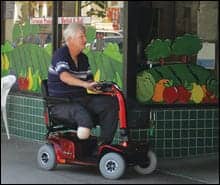New evidence suggests that walking on a treadmill at a comfortable speed and for longer duration is the most effective exercise to improve mobility in people with Parkinson’s disease, according to researchers.
"Difficulty walking is the greatest cause of disability in people with Parkinson’s disease," said Lisa M. Shulman, MD, with the University of Maryland School of Medicine in Baltimore and a Fellow of the American Academy of Neurology. "These results have important implications for how we manage Parkinson’s disease, since low intensity exercise can be done by most people with Parkinson’s, and our patients frequently ask what type of exercise they should be doing."
In the study, 67 people with Parkinson’s disease who had problems with walking were randomly assigned to three types of exercise: high intensity treadmill (greater speed, shorter duration), low intensity treadmill (lower speed, longer duration), or stretching and resistance exercises, which included repetitions of leg presses, extensions, and curls.
Participants exercised three times a week for 3 months and were supervised by exercise physiologists at the Baltimore VA Medical Center. They were tested before and after the training with assessments of distance covered in a 6-minute walk, walking speed at 10 meters and 50 feet, general fitness, and ratings of their Parkinson’s symptoms.
Researchers discovered that low intensity treadmill training resulted in the most consistent improvements in gait and mobility. People who were on the low intensity treadmill training performed better than the two other groups on the distance and speed tests. However, only stretching and resistance training improved the ratings on the Parkinson’s disease scale.
"Contrary to evidence suggesting that high intensity exercise is the most effective, our results suggest that a combination of low intensity training and stretching-resistance training may achieve the greatest improvements for people with Parkinson’s disease," said Shulman.
The study was supported by The Michael J. Fox Foundation for Parkinson’s Research, The National Institute on Aging Claude D. Pepper Older Americans Independence Center NIH grant P30-AG02874, VA Rehabilitation Research & Development Maryland Exercise and Robotics Center of Excellence, and the Baltimore VA Medical Center GRECC.
[Source: American Academy of Neurology]




